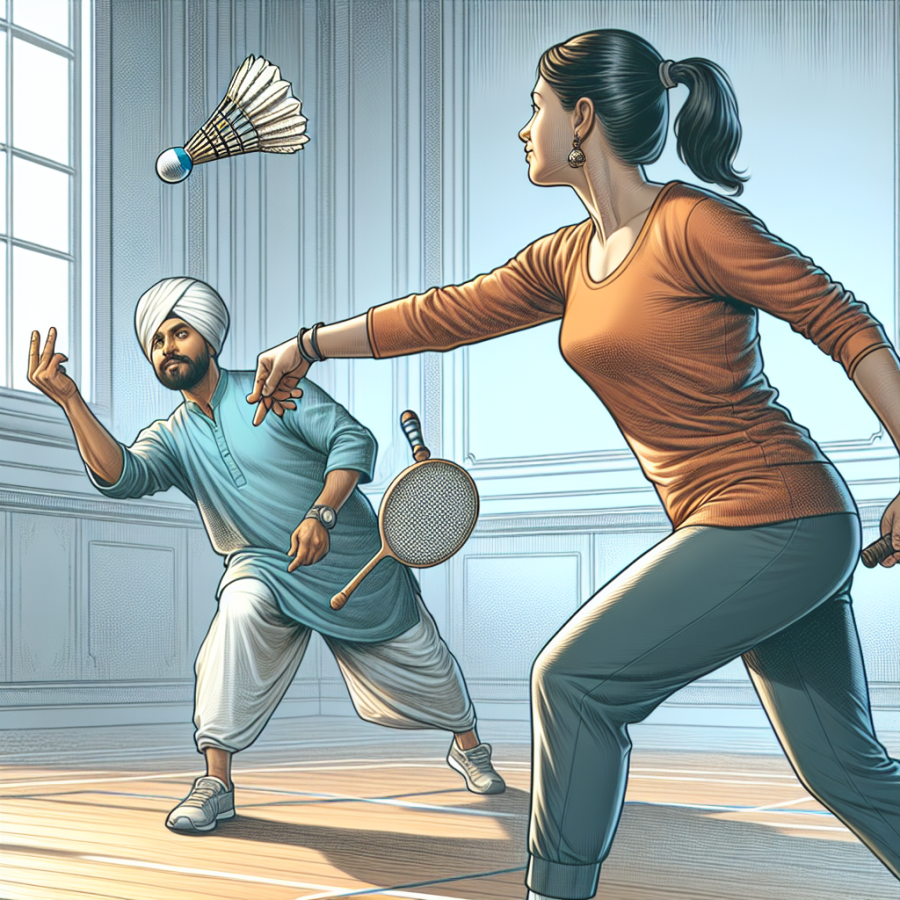Modern Adaptations and Revival Efforts of an Ancient Sport
Battledore and shuttlecock, the precursor to the modern game of badminton, has long been a favorite pastime that dates back to ancient civilizations. Despite its storied history, it has experienced fluctuations in popularity over the centuries. However, recent years have seen a resurgence in interest and several noteworthy adaptations that are helping to revive this ancient sport.
One of the most significant modern adaptations contributing to the revival of battledore and shuttlecock is the establishment of competitive leagues and organized play. These structured environments have provided enthusiasts with the opportunity to compete in tournaments, bringing together players of all ages and skill levels. The rules have been fine-tuned for competitive play, incorporating techniques and strategies that have evolved from the game's informal roots into a more rigorous sport.
Educational institutions have also played a critical role in the resurgence of the game. Physical education programs in schools around the world have incorporated battledore and shuttlecock into their curricula as a way to teach students coordination, agility, and the benefits of non-contact sports. These efforts are cultivating a new generation of players who are learning to appreciate the game's rich heritage while also engaging in healthy physical activity.
Cultural festivals and historical reenactments have seen battledore and shuttlecock featured as a way to connect with heritage and traditions. At such events, participants often don period costumes and use replicas of historical equipment, which not only educates spectators about the game's history but also provides a lively environment to experience it firsthand.
Technology has not been left behind in the revival of battledore and shuttlecock. Modern materials have been introduced to create more durable and efficient equipment. Lighter rackets made from composites and synthetic shuttlecocks that mimic the flight characteristics of the traditional feathered shuttles are among the advancements enhancing the playing experience. Additionally, online platforms and social media have facilitated the spread of interest in the game, connecting enthusiasts across the globe and fostering a sense of community and shared passion.
Finally, innovative adaptations of the sport have appeared. For example, blackminton, a form of battledore and shuttlecock played in the dark under UV lights with fluorescent equipment, offers a fresh, exciting twist on the traditional game. This and other variations add a level of entertainment and appeal to younger audiences who are looking for unique and engaging ways to enjoy physical activities.
These efforts to modernize and promote battledore and shuttlecock are ensuring that the age-old game does not fade into obscurity but continues to thrive and evolve.
Read also:
Soccer's Global Showdown: The 2022 FIFA World Cup Guide
The Historical Roots of Battledore and Shuttlecock
Before badminton became the dynamic sport we know today, its precursor, battledore and shuttlecock, laid the foundation for a pastime that has delighted players for centuries. This game, simple in concept but rich in history, has roots that extend deep into the past, across different cultures and continents.
The essence of battledore and shuttlecock is to keep a small feathered cork, known as a shuttlecock, in the air as long as possible without using hands. Instead, players use paddles, or battledores, to strike it back and forth. While the modern game of badminton is typically played with a net and competitive rules, its historical counterpart was more a leisurely activity emphasizing skill and endurance rather than competition.
The origins of battledore and shuttlecock are somewhat shrouded in history, but the game has been traced back to Ancient Greece. However, it flourished in Asia, particularly in China, where it was known as ‘Jiànzi’. The game was a popular form of entertainment, often enjoyed during festive occasions and could involve elaborate footwork and athletic skills. In addition to being a pastime for adults, it also served an important role in the physical education of children.
The game made its way to Europe via trade routes, particularly the Silk Road. By the 16th century, battledore and shuttlecock had become a fashionable pastime for children and adults alike in England. It was during this era that the term "battledore" — referring to a paddle — became associated with the activity.
Illustrations from the medieval and Renaissance periods show European nobility engaging in the game, highlighting its status as a social activity. It was inclusive in nature, allowing men and women to play together, even in the company of the socially elite. In these depictions, the women's attire is notably elegant and impractical for sport, suggesting that skillful, gentle volleys were the norm rather than the aggressive, competitive strokes seen in modern badminton.
The game remained a simple amusement throughout the 17th and 18th centuries, often enjoyed indoors during the winter months. The lack of a net and basic rules made it accessible and easy to play in a variety of settings. The goal was typically to achieve as many consecutive strokes as possible, with records often kept to track impressive rallies.
By the 19th century, the game began to evolve into what we now recognize as badminton.




